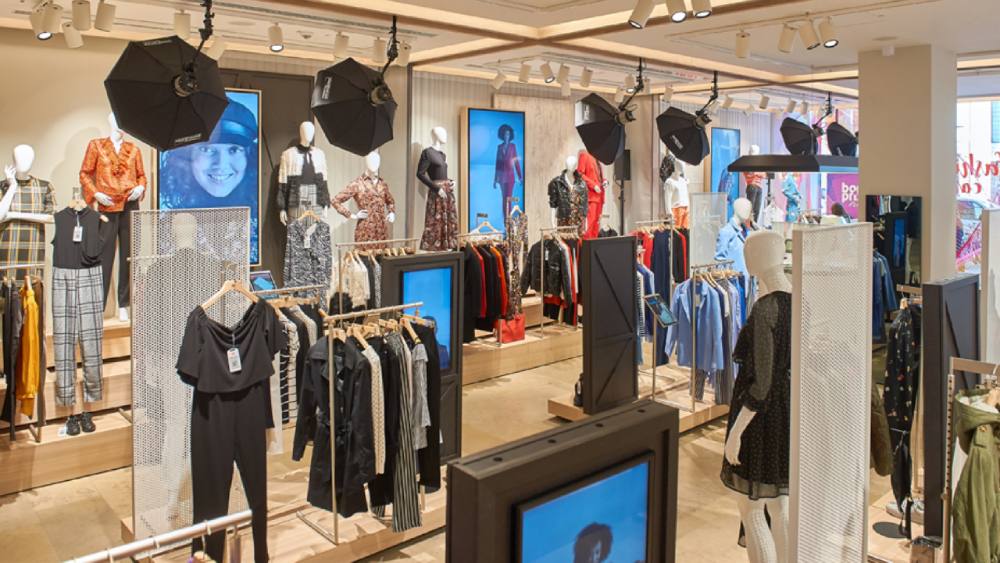Nobody’s Child UK Review 2025
Exclusive | 15% OFF Sitewide + Free Delivery - Verified

Summer Sale | Up To 70% OFF Sitewide - Exclusive

Buy Any One And Get 15% Off

Up To 50% Off Outlet Items

Save 20% On Women's Jumpsuits & Playsuits

Student Discount - Enjoy 15% Off Your Order

Get 15% Off Your First Full Price Order

I’m back with another fashion investigation! This time, I’m asking: Is Nobody’s Child a sustainable fashion brand? I’ve had my doubts for a while. Their prices are cheap. Their sales are even cheaper. And they have a huge range of clothes styles at any one time. It smells like fast fashion, but at the same time, they’re saying lots of good things. It’s time to investigate…
WHAT MAKES A FASHION BRAND SUSTAINABLE?
To decide whether a fashion brand is sustainable, I look for four things:
- Social sustainability: providing clear, accessible knowledge of who makes the brand’s clothes, and how they treat their people ethically, with safe working conditions and fair pay.
- Environmental sustainability: transparently listing out the natural and regenerated materials they use, as well as practices to lower their impact (e.g. reducing energy and water use, avoiding harmful chemicals).
- Slow production: dropping four or less collections per year, or at the very least, making an attempt to reduce the amount of clothing they produce.
- Circular practices: designing clothes that are long-lasting, resellable, and recyclable, as well as inviting customers to return garments, which go back into production within the brand, as opposed to charity donations, or worse – landfill.
Now, I have to note that most fashion brands won’t be doing all of these things (even if they should, and even if there are truly sustainable brands out there doing them ALL). However, if there’s a good amount of information on all four, I’m willing to trust that the brand has good intentions and is integrating sustainability across its business, rather than in small collections or through marketing greenwashing.
At the same time, for anyone looking to suss out sustainable fashion brands at a glance, I have to warn you that it’ll be very hard to get adequate information on all of these areas just from their social media account or website. They don’t want you reading their About or Sustainability pages for too long either – they want you to shop!
So, that’s where these guides come in! Just as I trust Cruelty-Free Kitty to tell me which beauty brands are truly cruelty-free, I’m hoping to help inquisitive shoppers find out whether brands bandying around sustainable terms really are sustainable.
NOTE: SUSTAINABLE FASHION ISN’T AN OFFICIALLY DEFINED TERM
Now, unlike cruelty-free analogy I just dropped, sustainable fashion isn’t an official or protected term. Anyone can call anything sustainable. And on top of that, my own view of what qualifies as sustainable fashion has evolved over time too, to now include adult workers only (because some laws and legislation allow workers as young as 14), as well as looking for circular, regenerative practices.
If you’re a long-time reader, you’ll remember my similar guides to Arket, Everlane, Matt & Nat, Monsoon, and Sezane, and see how my scrutiny has grown over time. And you know what? I think my cynicism is justified. All of these brands were saying great things, but it turns out, only Sezane was borderline acceptable.
(You may also like to compare the investigations I did into 70+ Fast Fashion brands, and see how much venom I can spit at the brands exploiting people and planet while also greenwashing…)
And finally, I’ll be honest, as someone whose interest in sustainable fashion is purely from a consumer’s perspective (i.e. I don’t work in fashion, I’ve not got a fashion degree) these guides tend to come about because I’ve been burned myself! A lot of the time, I’ve been a loyal shopper at these brands, only to realise something’s not quite right… So, how will NC fare?
WHO IS NOBODY’S CHILD?
It’s time to explore Nobody’s Child. Founded in 2015, the brand says their mission is to “revolutionise affordable womenswear, delivering expressive, feminine and responsible collections.” Sounds cute! And their clothes really are cute. Straddling a fine line between Reformation, Rouje, and a high-street store like New Look, they create feminine patterned and floral designs that are designed to ’empower our customers to be the very best version of themselves, regardless of their shape or size’.
(I’ll be honest, any fashion brand that wants to ’empower customers’ makes me cringe. You’re a retailer, not a life coach. However, inclusive sizing is a good thing, and something that sustainable fashion is lacking.)
One thing that does strike me as an initial red flag is how Nobody’s Child seems to shy away from accountability of its own impact, even on its own Sustainability page. They consider themselves in their ‘infancy’ despite being 6 years old, and turning over just under £3.5 million in 2019. Instead, they seemingly take the approach of ‘learning and growing … continuing to improve our impact and listen to our community’ rather than being sustainable from the start. I struggle to accept this as an approach, and while it’s all well and good to have an ‘instinctive ambition to strive to do better’, they do advertise themselves as ‘Responsible Fashion’ in Google Ads.
Is this an attempt to get off the hook if caught out? Or is this actually what’s required from brands – constant improvement? Or is it simply wokewashing? Their ‘palm-oil free’ cookies policy definitely makes it feel that way…
1. IS NOBODY’S CHILD AN ETHICAL FASHION BRAND?
Ignoring the above context that I just dumped on you, let’s look at Nobody’s Child (NC)’s ethics around how they treat their people. Who makes their clothes? And are they afforded true social sustainability?
In compiling my research for this guide, I sent over the following seven questions to NC’s PR team:
- Who makes NC’s clothes?
- Does NC have a supplier list or supplier map available to view?
- Does NC ensure workers are in a safe and healthy environment? If so, how?
- What sustainable materials does NC use?
- Is NC taking any steps to reduce its energy consumption, water consumption, or creation of waste?
- How many collections does NC produce per year?
- Does NC have any circular practices in place (internally or customer-facing)?
Instead of answers, I was presented with their publicly-available NC Responsible Brand Commitment (now removed), dated March 2021. Great that it’s available online, but does it answer the questions? Let’s find out…
WHO MAKES NOBODY’S CHILD’S CLOTHES?
Nobody’s Child has a Factories list which outlines the seven factory partners that make 99% of their clothes (although I do wonder who makes that remaining 1%?):
- Neotex in Morocco (makes 23% of collection, mainly dresses)
- Echotex Ltd in Bangladesh (five locations, makes 22% of collection, mainly jersey, knitwear and loungewear)
- Oxygen in Ukraine (makes 22% of collection, mainly dresses and tops)
- HS Fashion in China (makes 20% of collection, mainly knitwear)
- SAI Creations in India (makes 5% of collection, mainly dresses)
- FA Moldova in Moldova (makes 5% of collection, mainly dresses)
- Safran in Turkey (makes 2% of collection, mainly dresses)
I think it’s interesting that Nobody’s Child mainly shouts about textiles certifications like OEKO-TEX and GOTS alongside their factories. It sounds good if you don’t really think about it, but when you do, it makes you wonder why they can only really tout great textiles, rather than fair pay, safe facilities, etc.
IS NOBODY’S CHILD A SUSTAINABLE FASHION BRAND?
Now, onto the category that most greenwashing brands firmly cling on to for sustainability: sustainable materials and environmental impact. It is seemingly far easier to switch out oil-based fabrics for natural and regenerated materials, and incorporate impact-lowering practices, than it is to pay people fairly or reduce speed of production.
In Nobody’s Child’s case, they appear to be doing well in this area, despite their constant focus on ‘improvement’ rather than steadfast sustainability.
WHAT SUSTAINABLE MATERIALS DOES NOBODY’S CHILD USE?
Nobody’s Child’s fashion collections are mainly made from:
- Lenzing viscose (50% of collection)
- Recycled synthetics (20% of collection)
- Organic cotton (15% of collection)
- Linen (2% of collection)
- Mulesing-free sheeps wool (coming in AW21)
When lined up against my sustainable fabrics guide, I have to say it’s not a bad list (although what about the remaining 13%?) I do like how they prioritise sustainable textile certifications, and they even note that they are “working to reduce the use of blended synthetic materials, making our products easier to recycle at the end of their life.” Big thumbs up for designing with circularity in mind!
Alongside their list of preferred materials, Nobody’s Child also highlights the materials they refuse to use:
- Animal fur
- Angora (rabbit) wool
- Conventional nylon textiles
- Conventional polyester textiles
- Conventional viscose
- Exotic skins or hides
- Products from endangered species
- Genetically modified or non (certified) organic cotton
- PVC (polyvinyl chloride)
- Virgin animal-derived leather
- Virgin down and feathers
Again, a great list! There is real nuance in this list too, shown in the way that they avoid products of animal cruelty, virgin oil-based fabrics, and even non-certified organic cotton.


